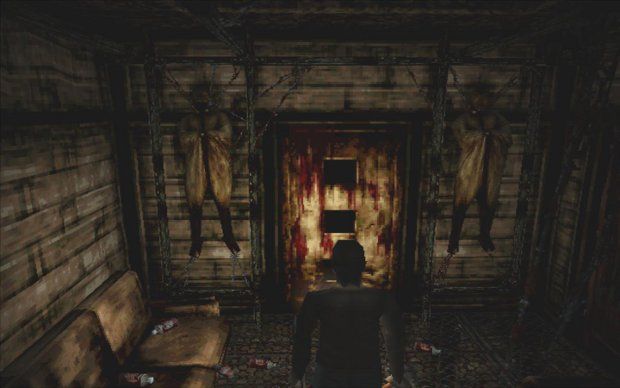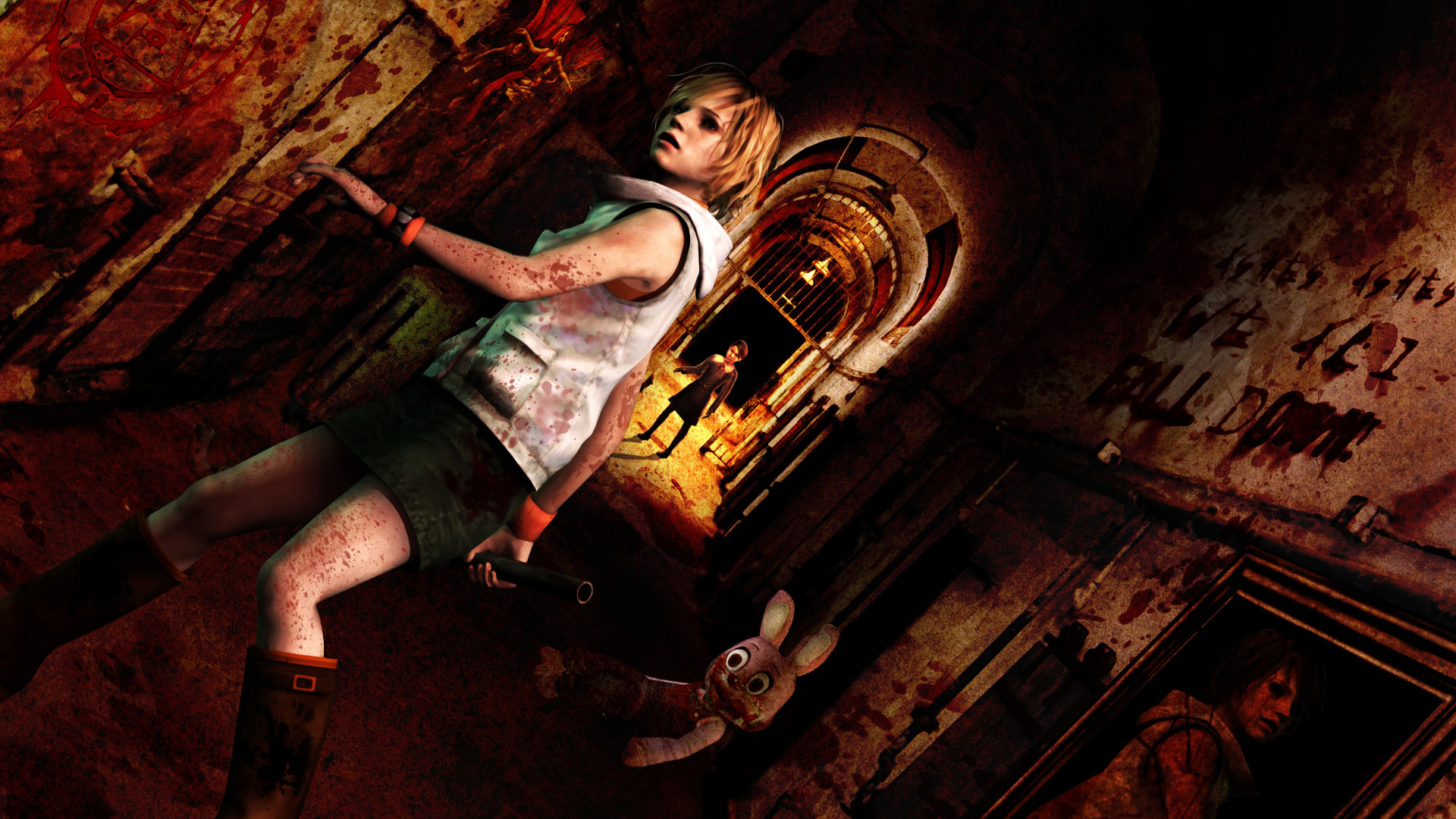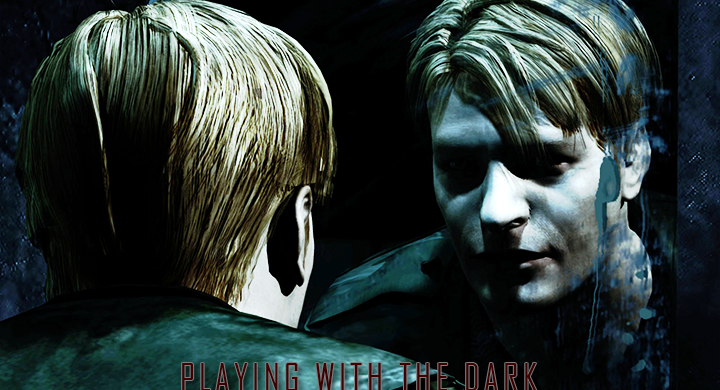Feature: "Playing with the Dark: Horror Games and Why They’re Important"
This piece has been repurposed from my enterprise story assignment submitted in my JMC 201 News Writing and Reporting course at Arizona State University.
Video games have been around for almost six decades, and as such as have
evolved to cover multiple different genres, just as books, film, television,
music, and other forms of media have.
Among
the games that feature crime sprees or cooking or go-karts or martial arts, one
genre that has captured the interest of a wide audience is “survival horror,” a
term popularized by the game “Resident Evil” in 1996.
This
genre is defined by experiences that force the player to endure terrifying
situations, which can vary widely: “Five Nights at Freddy’s” sees the player
confined to a security room at night under the assault of animatronic
characters, “Alien: Isolation“ pits the player in a decommissioned space
station being stalked by an intelligent and deadly alien creature, and “Silent
Hill 2” follows the journey of a widower entering a town haunted by
disturbing monsters in search of his supposedly dead wife.
So
why do so many players seek out frightening and upsetting situations? Shouldn’t
the protective instincts in our brains tell us to quit playing these scary
games and instead find something more comforting? Why do we seek to instill in
ourselves fear and anxiety?
As
it does with horror films and books, fear plays a major part in these games’ appeal.
Yet unlike any other medium, horror games involve the active participation of
players. When you watch a horror movie, the most interaction you have with that
movie is pressing Play or Pause (or maybe turning on subtitles.) You can hide
under a blanket or close your eyes during the more intensely scary scenes, but
the film will continue to play.
By
contrast, a horror game will scare a player yet still require the player to
respond according to that game’s rules and systems. If you close your eyes and
just hope that the threat will go away, your character in the game will
probably die, and the game will reset to a previous state.
 |
| The "Fatal Frame" series distinctly forces players to take pictures of the apparitions that haunt the player. |
Plenty
of research has been conducted in attempts to explain why we do enjoy horror
games. One such idea that’s been used is called excitation-transfer theory:
basically, experiencing things that scare us will arouse us, usually in a
negative way (due to our psychological wiring,) but this arousal becomes
positive once we’ve escaped the causes of fear and anxiety (known as
catharsis.) This is common in horror films, as it gives the audience breathing
room between scares. Being bombarded with too much in too little time will
overstimulate us, causing us to quit watching or playing these scary pieces of
entertainment. This means that a balance must be struck, in order to maintain
the effectiveness of scares as well as the enjoyment of an audience. You don’t want
too little or too much.
 |
| The "Silent Hill" games developed by Team Silent show a perfect understanding of flow between horror and safety. |
Jamie
Madigan, writer for multiple video game websites and magazines (such as
GamePro,) with a Ph.D in psychology, said in his article, "The Psychology of Horror" [link here]:
“A second set of explanations
for horror’s delight posits that we hate the horror, but like the proverbial
man who bangs his head against the wall because it feels so good when he stops,
we love the relief that comes at the end.”
Another
reason that horror games have such a mass appeal is their tendency to cover
subjects usually avoided by other genres of entertainment. As is also common
with other medium in the horror genre, horror games will often contain stories
and situations that illustrate taboo subjects, paranoia, societal anxieties,
primal phobias, and personal trauma. Examples include themes of sexual assault
(in “Silent Hill 2,”) distressing hallucinations (“Eternal Darkness: Sanity’s
Requiem,”) serial killers (“Condemned: Criminal Origins,”) forbidden knowledge
(“Call of Cthulhu: Dark Corners of the Earth,”) outbreaks of infectious lethal
diseases (“Resident Evil,”) and violent extraterrestrial encounters (“Dead
Space.”)
 |
| "Condemned: Criminal Origins" has ritualistic murders, something you don't expect to see from, say, "Mario Kart" |
Dr.
Andrew Weaver is an Associate Professor at Indiana University who
researches media psychology with a special emphasis on media
violence, race and media, and moral choice in video games. In a Eurogamer
article published in 2010 (link here,) he discusses why we find horror games scary; even
though we know what we’re seeing isn’t real.
"The
physiological reaction to frightening stimuli is pretty much the same whether
it's real or [in the media.] As audience members we're pretty good at engaging
in suspension of disbelief. At some level we can choose to essentially forget
that what we're watching or playing isn't real so that we can become fully
transported into the story. If we do become immersed in a story, then the
empathetic bonds we create with the characters will cause us to feel the fear
they experience - much the same way we would in real life.”
The
biggest advantage horror games have pertaining to exploring these themes and
making audiences empathize with characters excitement, however, is the fact
that we actively interact with these situations. In all of the above
mentioned games, you have to confront that which is meant to scare you, in
order to continue experiencing the story. But unlike an action game where
you’ll often be armed to the teeth with powerful weapons and tons of
ammunition, well-made horror games aim to make violent confrontations difficult
for the player through disempowerment. You’ll have weak weaponry, little ammo,
sparse space to move around in, low visibility, and even unconventional goals
in a fight: mutated corpses in Dead Space resist blows to the head, so
the better approach is actively removing their deadly limbs with engineering
tools to (literally) disarm them.
“Horror games are able to delve into human fear in a way that books
and movies cannot; they use the key element for games, interaction, to achieve
the greatest effect amongst players,” says Lukas Verselis, 19, Foresight
Research Assistant for the School of Strategic Human Communication at Arizona
State University. “The scariest games to me involve human corruption, so ‘Silent
Hill’ is a classic for me. Games that allow you to fight back can cheapen the
effect as well.”
Also
commonly shared between horror games and other media of horror is the
elimination of gender stereotypes. In far too much conventional media, men are
illustrated in a vast variety of roles as heroes and villains and anything in
between, but women are generally weaker or needier when not posed as villains
(which is in itself often an attempt to persuade women to embrace conventional
roles.)
“In
the case of gender roles, the societies have established the hegemony of males
by institutionalizing of male dominance over women…men have been perceived as
the head of the household and women were mainly housewives. Nowadays the
differences between male and female roles are smaller; however mass media still
perpetuates traditional gender stereotypes.” (Wolska 2011)
Many
horror games do away with conventional gender roles by making men and women are
just as powerful (or rather, powerless) as each. For example, “Silent Hill 3”
features a female teenage protagonist, who deals with a disturbing journey
involving rituals and terrifying monsters mostly on her own; her male ally
never fights alongside her during gameplay. The story actually makes effective
use of a female perspective, featuring themes of fertility, birth, and even
abortion, while making developing the protagonist as a strong-willed and
capable character based on her own words and actions rather than any reason
tied to her gender or sex. It’s vastly important that representation in media
expand to be more inclusive, and many horror games have helped in that way.
 |
| Heather from "Silent Hill 3" is still one of my favorite horror game characters. |
Lastly,
horror games have even been utilized in therapeutic ways, sometimes known as
“virtual reality exposure therapy.” One game, “Nevermind,” actually utilizes a
cardio chest strap, which will detect physiological signs of fear in the player
(mainly, an increase in heart rate.) The game will then increase its difficulty
as a response to the player being afraid, and inversely, become easier if the
player manages to calm down.
Two
more examples of virtual reality exposure therapy are “Bravemind” and “STRIDE,”
which have been utilized by over 50 hospitals and university research centers
to treat Post-Traumatic Stress Disorder in members of the armed forces who have
experienced combat.
“More
than just sights and sounds, “Bravemind” uses a virtual reality head-mounted display,
directional 3D audio, vibrations, and smells to generate a truly immersive
recreation of the event that can be regulated at a pace the patient can
handle.”
Facing
our fears is an important part of our development, and one of the best ways
that we can do this is through horror games. We’re put face-to-face with
nightmarish situations, but in reality, we’re perfectly safe. Our imaginations
run wild, both as players and as the creators of these experiences, in ways
that other games can’t emulate, potentially in ways that can benefit us in very
effective psychological ways.
“When
we block unpleasant emotions, we also block pleasant ones, since they are all
intertwined,” said Kosjenka Muk, a Special Education teacher as well as a Soulwork
Systemic Coaching trainer from Croatia. “To small, dependent children,
immature behavior of people around them can be so frightening that they try to
absorb the shock by creating limiting beliefs and suppressing their feelings.
The reason it is so hard to resolve those feelings and become aware of them is
that infantile parts of us, once dissociated and suppressed from consciousness,
never had the chance to mature. They stay on a childish level of perception
even when we grow up. Even now, they are still just as afraid of difficult
emotions, as when they were originally created.”
 |
| Angela's tragic story in "Silent Hill 2" is a perfect example of the importance in confronting our fears. |
Perhaps
horror games can be more than simply entertainment; perhaps they can be the
push we need to overcome our inhibitions.
 |
| Don't be afraid to enter the fog... |






Comments
Post a Comment